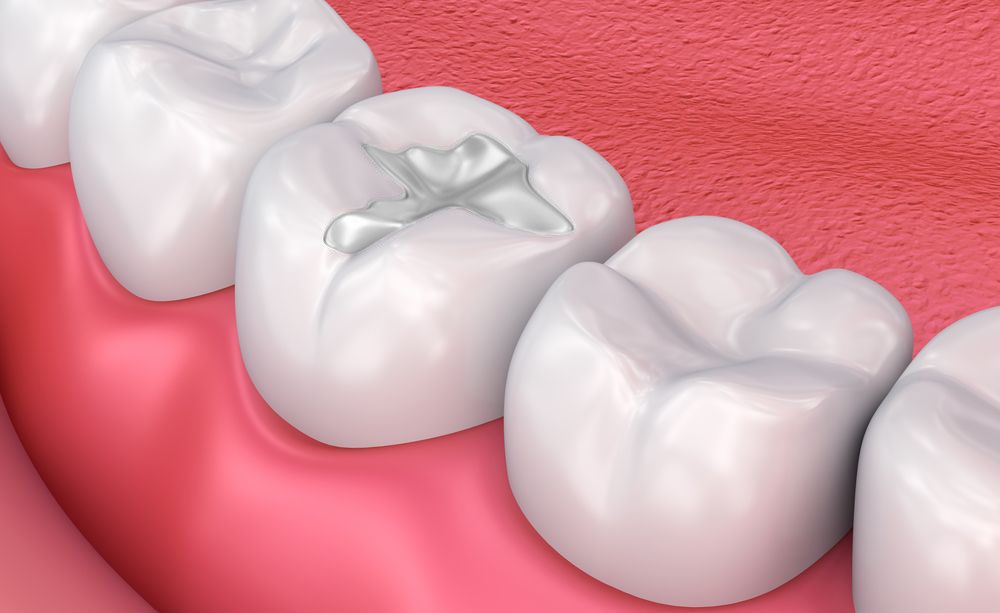
Tooth Filling Cost for Different Cavities
A Tooth Filling Cost in Dubai can vary depending on several factors, including the type of filling material used, the location of the cavity, and the dentist’s expertise. Dental fillings are one of the most common treatments for cavities, and understanding what goes into the process, the different materials available, and how to care for your teeth afterward can help you make informed decisions.
What Are Tooth Fillings?
A tooth filling is a dental procedure used to restore a tooth that has been damaged by decay. Cavities, which are small holes in the tooth enamel caused by bacteria, can lead to pain and infection if left untreated. The filling process involves removing the decayed portion of the tooth and then filling the cavity with a material that helps restore the tooth’s function and appearance.
The Tooth Filling Process: A Step-by-Step Guide
Understanding the steps involved in the filling process can help you feel more comfortable during your visit to the dentist. Here’s a breakdown of what to expect:
1. Diagnosis and Examination
Before the procedure begins, your dentist will conduct a thorough examination of your teeth using X-rays to identify the size and location of the cavity. This helps them determine the appropriate treatment and filling material.
2. Preparation of the Tooth
Once the diagnosis is complete, the dentist will numb the area around the affected tooth with a local anesthetic to ensure you feel no pain during the procedure. Then, the decayed portion of the tooth will be removed using a dental drill or laser, depending on the cavity's size and location.
3. Cleaning the Cavity
After removing the decay, the dentist will clean the cavity to remove any remaining bacteria and debris. This step ensures that the cavity is completely free from infection before the filling is placed.
4. Filling the Cavity
Next, the dentist will fill the cavity with a suitable material. There are various types of filling materials available, which we will discuss in the following sections. The filling will be shaped to match the natural contours of the tooth.
5. Final Adjustments
Once the cavity is filled, the dentist will check the bite to ensure that the filling does not affect how your teeth come together. They will make any necessary adjustments to ensure comfort and proper function.
6. Polishing the Filling
The final step is to polish the filling so it blends seamlessly with the natural tooth, ensuring both aesthetic appeal and durability.
Types of Tooth Fillings
The choice of filling material plays a significant role in the Tooth Filling Cost in Dubai, as different materials come with varying costs and longevity. The two most common types of fillings are:
1. Silver Fillings (Amalgam)
Silver fillings, also known as amalgam fillings, are a mixture of metals such as silver, mercury, tin, and copper. They are durable, cost-effective, and suitable for large cavities in the back teeth where they are less visible.
2. Tooth-Colored Fillings (Composite)
Tooth-colored fillings, or composite fillings, are made from a blend of plastic and glass. These fillings are ideal for cavities in the front teeth or visible areas where aesthetics are a concern. Composite fillings are more expensive than amalgam fillings but provide a more natural appearance.
3. Ceramic Fillings
Ceramic fillings are made from porcelain and are known for their strength and natural tooth-like appearance. They are more durable than composite fillings but can be more costly due to the materials used and the complexity of the procedure.
4. Gold Fillings
Gold fillings are made from a gold alloy and are highly durable and long-lasting. However, they are also one of the most expensive types of fillings and require multiple visits to the dentist.
5. Glass Ionomer Fillings
Glass ionomer fillings are made from a combination of glass and acrylic. They are often used for fillings in areas that are not subjected to heavy biting forces, such as the root surface of teeth. While they are less durable than other materials, they release fluoride, which can help prevent further decay.
Factors That Influence Tooth Filling Cost in Dubai
While the exact Tooth Filling Cost in Dubai will depend on the type of filling you choose, several other factors can impact the price:
1. Cavity Size
Larger cavities require more filling material and more time to complete, which can increase the cost of the procedure. A small filling in a front tooth is typically less expensive than a large filling in a back tooth.
2. Location of the Cavity
Fillings in the back teeth are generally more expensive because these teeth are harder to access and require more time and precision. Additionally, fillings in the back teeth are often larger due to the chewing surfaces being more susceptible to wear.
3. Dental Clinic and Location
The cost of fillings may vary depending on the dental clinic’s location, reputation, and the expertise of the dentist. Clinics in more upscale areas may charge higher rates for dental services.
4. Insurance Coverage
Many dental insurance plans cover a portion of the cost of fillings, but coverage can vary. It's important to check with your insurance provider to determine what portion of the cost will be covered and how much you will need to pay out of pocket.

Post-Treatment Care After a Filling
Taking care of your teeth after a filling is essential to ensure the filling lasts as long as possible and prevent further complications. Here are some important post-treatment tips:
1. Avoid Eating Hard Foods
For the first 24 hours after the filling, try to avoid eating hard, sticky, or chewy foods. These can cause the filling to become dislodged or damaged before it has fully set.
2. Maintain Good Oral Hygiene
It’s important to continue brushing and flossing regularly to prevent any new cavities from forming around the filling. Be sure to brush gently around the filled area to avoid irritating the surrounding gums.
3. Watch for Sensitivity
It’s normal to experience some sensitivity to hot and cold foods after a filling. However, if the sensitivity persists or worsens, it could indicate an issue with the filling, and you should consult your dentist.
4. Regular Checkups
Regular dental checkups are essential for monitoring the condition of your fillings and overall oral health. Your dentist will check for signs of wear and tear and recommend any necessary maintenance.
Conclusion
When it comes to choosing the right filling for your teeth, there are several options available, each with its benefits and costs. The Tooth Filling Cost Dubai will depend on the material chosen, the size and location of the cavity, and other factors. By understanding the process and weighing your options carefully, you can make an informed decision that balances cost, aesthetics, and long-term durability.
